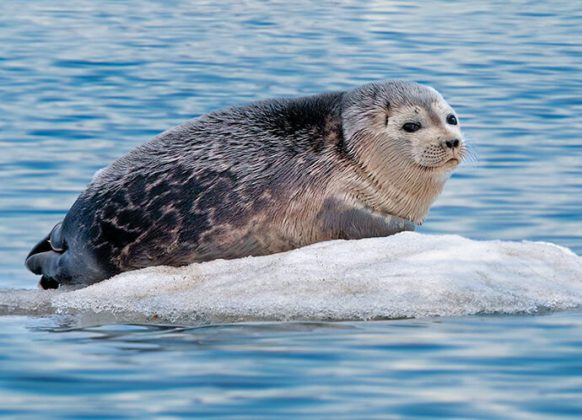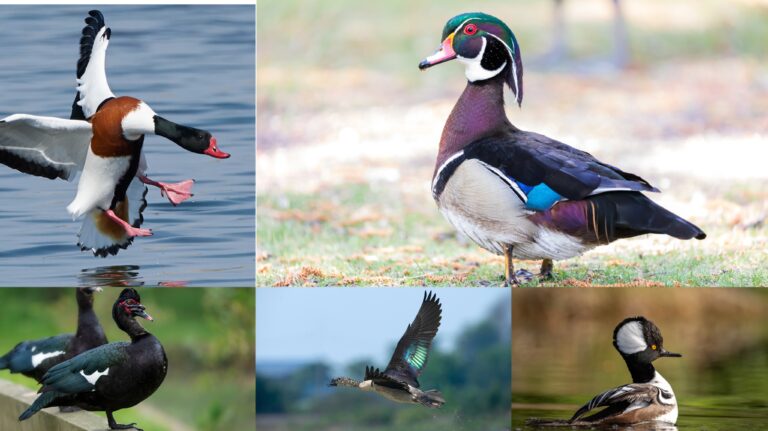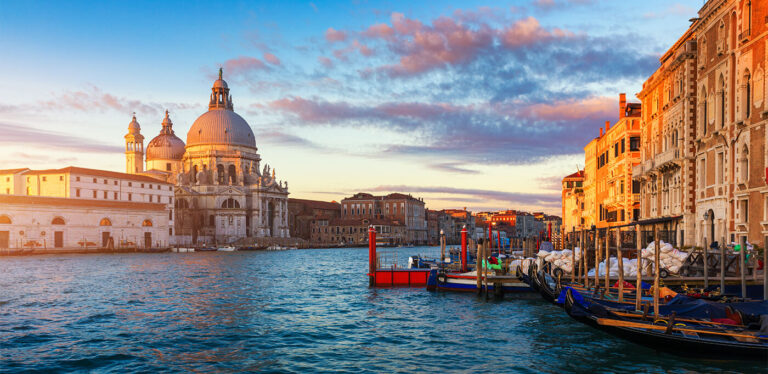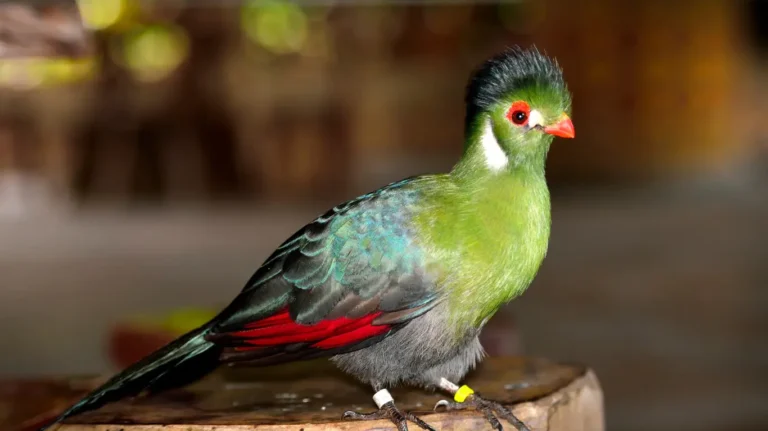Top 14 Most Beautiful Arctic and Antarctic Animals
The Arctic is a vast and frozen wonderland, teeming with life adapted to some of the harshest conditions on Earth. It is a region where breathtaking wildlife live, with each species displaying unique survival traits. Join us as we explore the top 10 most beautiful Arctic animals, from the majestic polar bear to the elusive narwhal. Learn about their charming behaviors, discover where to find them, and understand conservation’s critical role in preserving their fragile habitats.
Unique Facts About Arctic Animals
- Polar Bears Are Marine Mammals: While polar bears spend most of their lives on sea ice, they are classified as marine mammals due to their reliance on the ocean for hunting seals.
- Arctic Terns Experience Two Summers: Thanks to their migration from the Arctic to the Antarctic, Arctic terns enjoy two summers a year, giving them more daylight than any other animal.
- Narwhals Can Dive Over a Mile Deep: These “unicorns of the sea” can dive up to 5,000 feet in search of fish and squid, making them one of the deepest-diving marine mammals.
- The Arctic Fox Can Survive Extreme Temperatures: Its thick fur makes it so well-insulated that it can withstand temperatures as low as -50°C (-58°F) without shivering.
- Beluga Whales Have Flexible Necks: Unlike most whales, belugas can turn their heads from side to side because they lack fused neck vertebrae, making them highly agile in the water.
- Musk Oxen’s Hair Is Warmer Than Wool: The musk ox’s long, shaggy outer coat and dense undercoat provide exceptional insulation, allowing it to survive freezing Arctic winds.
- Snowy Owls Nest on the Ground: Unlike many other birds of prey, snowy owls prefer nesting on the Arctic tundra’s open ground, where they can spot predators and prey from a distance.
- Reindeer Can See Ultraviolet Light: This unique vision adaptation helps reindeer spot predators and food in the low light of the Arctic winter.
- Arctic Wolves Can Go Days Without Food: Due to the scarcity of prey in their environment, Arctic wolves have evolved to endure long periods without eating, surviving on fat stores until they can hunt.
- Ringed Seals Create Breathing Holes in Ice: Using their sharp claws, ringed seals dig out and maintain breathing holes in the thick Arctic ice, allowing them to surface for air even when the water is frozen over.
1. The Majestic Polar Bear: Master of the Arctic Ice
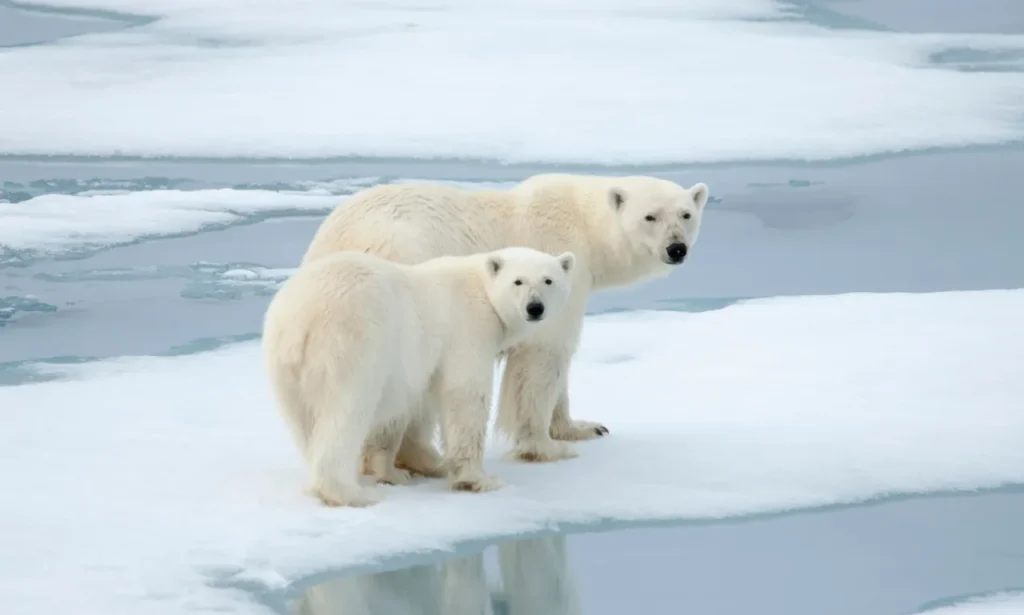
The polar bear is a true icon of the Arctic, representing strength and survival in one of the most extreme environments on Earth. These powerful predators primarily hunt seals on sea ice, using their keen sense of smell to detect prey from miles away. Despite their solitary nature, they closely bond with their cubs, nurturing them for the first few years of life. Unfortunately, polar bears face severe threats as climate change reduces the sea ice they depend on for hunting. Conservationists are working tirelessly to protect their future.
- Best Places to See: Svalbard (Norway), Churchill (Canada), Greenland
- Conservation Status: Vulnerable
Polar Bear Facts
| Habitat | Arctic sea ice, coastal areas |
| Lifespan | 25-30 years |
| Size | Up to 10 feet in length (males) |
| Weight | 900-1,500 pounds (males) |
| Diet | Seals (primary), fish, small mammals |
| Adaptations | Thick blubber, fur for insulation, strong swimmer |
| Threats | Climate change, habitat loss, human activities |
2. The Resilient Arctic Fox: Survival Expert of the Tundra
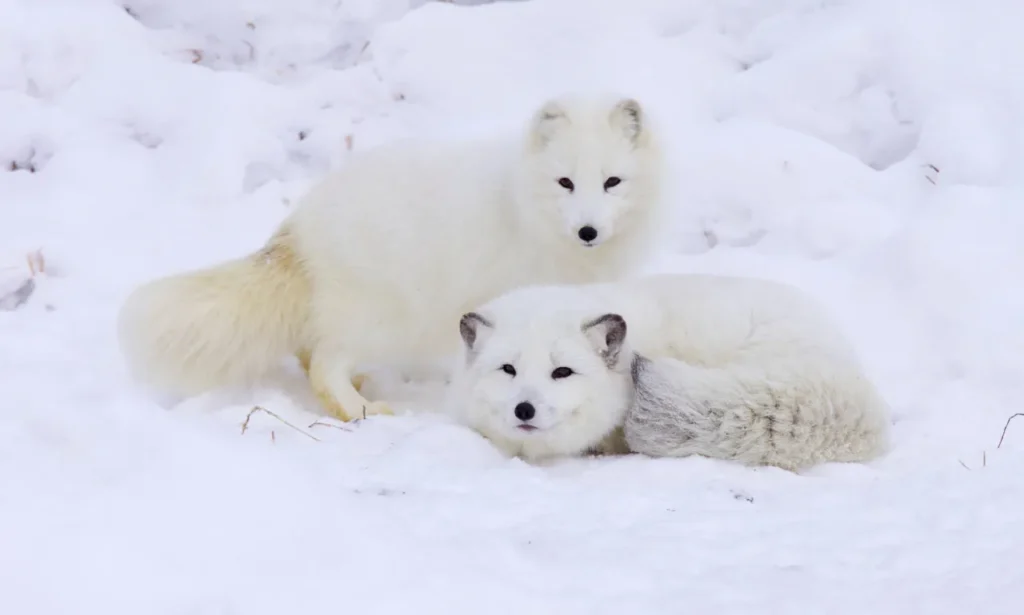
The Arctic fox is a small yet incredibly resilient creature that thrives in the frozen Arctic tundra. Its thick fur changes colour with the seasons, providing both warmth and camouflage. Arctic foxes are opportunistic feeders known for their resourcefulness in finding food, whether hunting small mammals or scavenging from larger predators. They are also known for their playful behavior and ability to store food for leaner times. However, as the Arctic warms, the fox’s survival is increasingly threatened by competition with the red fox, which is expanding into its territory.
- Best Places to See: Iceland, Alaska, Canada
- Conservation Status: Least Concern
Arctic Fox Facts
| Habitat | Tundra, coastal areas, Arctic forests |
| Lifespan | 3-6 years |
| Size | 18-27 inches (excluding tail) |
| Weight | 6-10 pounds |
| Diet | Small mammals, birds, carrion |
| Adaptations | Seasonal fur color change, excellent burrowers |
| Threats | Climate change, competition with red fox |
3. The Snowy Owl: Silent Predator of the Arctic
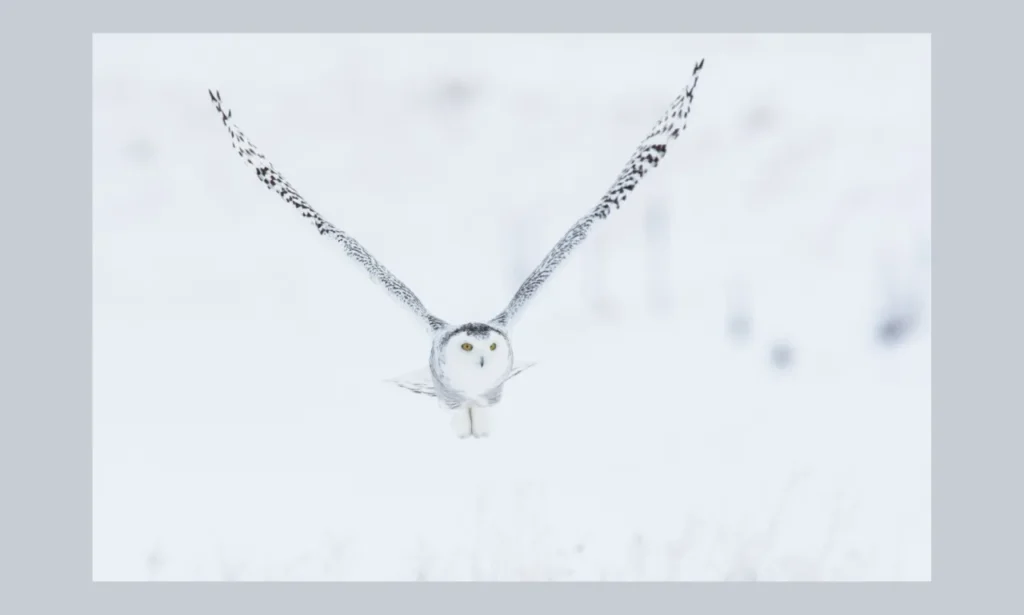
The Snowy Owl is one of the most visually striking birds of prey in the world, with its pristine white plumage and piercing yellow eyes. Unlike many owls, Snowy Owls are diurnal, meaning they hunt during the day. They are skilled hunters, using their sharp eyesight to spot prey from great distances and their silent flight to swoop down unnoticed. Snowy Owls feed on lemmings and hunt other small mammals and birds. Their impressive hunting skills and beautiful appearance symbolize the raw beauty and harshness of Arctic life.
- Best Places to See: Northern Canada, Alaska, Siberia
- Conservation Status: Least Concern
Snowy Owl Facts
| Habitat | Open tundra, grasslands, marshes |
| Lifespan | 10-20 years |
| Size | 20-28 inches in length |
| Weight | 3.5-6.5 pounds |
| Diet | Lemmings, small mammals, birds |
| Adaptations | Silent flight, keen eyesight |
| Threats | Habitat destruction, climate change |
4. The Arctic Wolf: Fierce Predator of the Frozen Wilderness
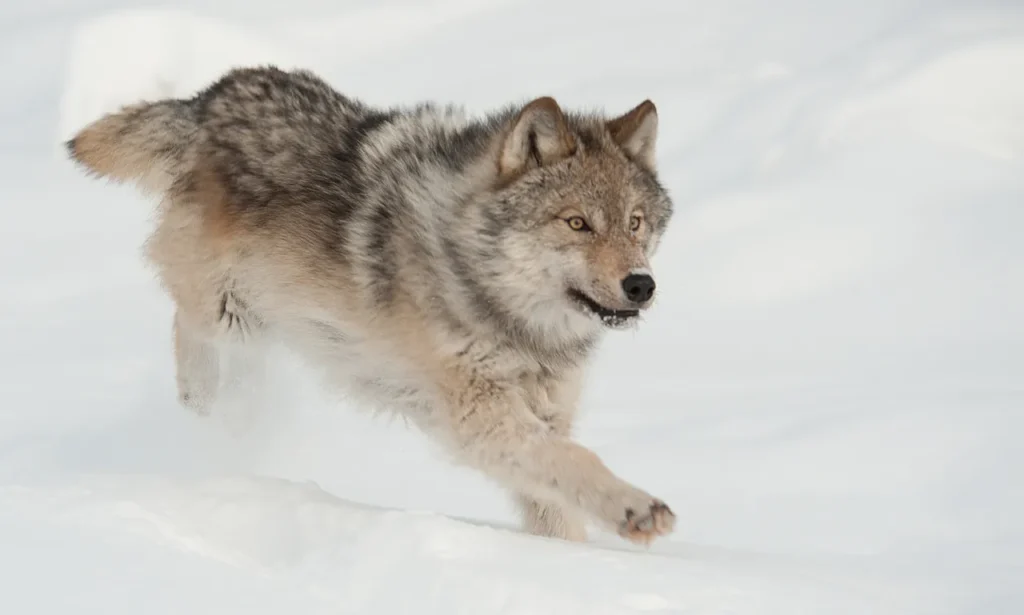
The Arctic wolf is a fierce and highly adapted predator, thriving in the coldest regions of the Arctic. With its thick white coat, the Arctic wolf is perfectly camouflaged in the snow, which helps it approach prey undetected. Unlike many other wolves, Arctic wolves have learned to survive in an environment where food is scarce, often hunting in packs to bring down larger prey like muskoxen and Arctic hares. These wolves are also highly social animals, living in family packs with complex social structures. Despite their fearsome reputation, they play an essential role in maintaining the balance of the Arctic ecosystem.
- Best Places to See: Northern Canada, Alaska, Greenland
- Conservation Status: Least Concern
Arctic Wolf Facts
| Habitat | Tundra, mountainous regions, coastal areas |
| Lifespan | 7-10 years |
| Size | 3-5 feet in length (excluding tail) |
| Weight | 70-125 pounds |
| Diet | Muskoxen, Arctic hares, caribou |
| Adaptations | Thick coat, pack hunting strategies |
| Threats | Habitat loss, climate change |
5. The Arctic Hare: Fleet-footed Survivor of the Tundra

The Arctic hare is a symbol of resilience, thriving in the extreme conditions of the Arctic tundra. This herbivore can outrun most predators with its large, powerful hind legs. Its fur changes color with the seasons, turning white in the winter to blend with the snow and brownish-grey in the summer. Arctic hares are highly social creatures, often found in large groups for added protection against predators. They feed on woody plants, mosses, and lichens, which can be scarce during the long, harsh winters.
- Best Places to See: Northern Canada, Greenland
- Conservation Status: Least Concern
Arctic Hare Facts
| Habitat | Tundra, rocky outcrops, snow-covered regions |
| Lifespan | 3-5 years |
| Size | 17-25 inches in length |
| Weight | 6-15 pounds |
| Diet | Woody plants, mosses, lichens |
| Adaptations | Speed, seasonal fur change |
| Threats | Predation, habitat loss |
6. The Reindeer: Majestic Migrator of the Arctic Tundra
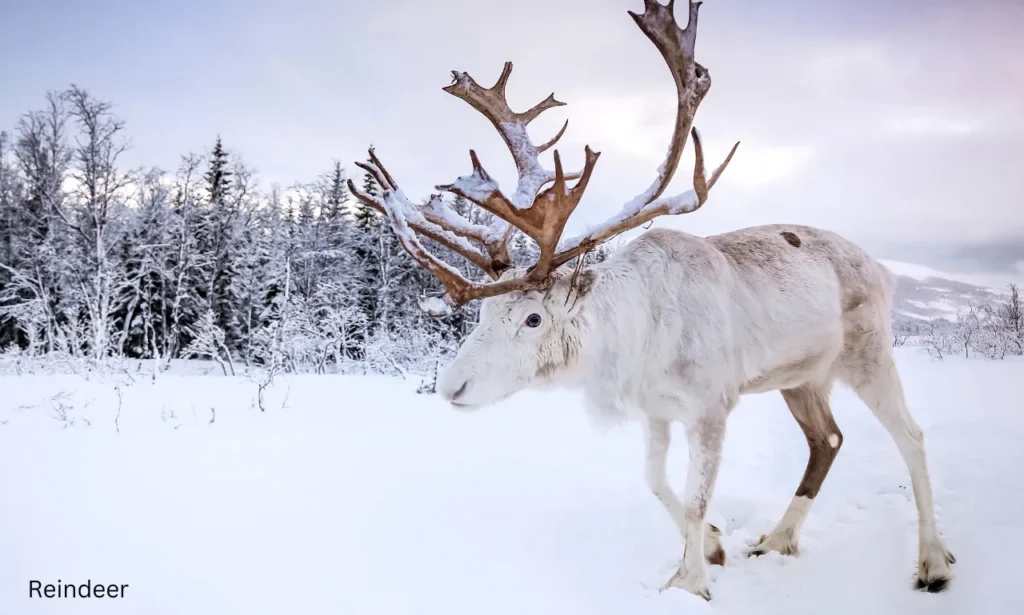
The reindeer is a valid symbol of the Arctic, known for its incredible endurance and annual migrations across the tundra. Reindeer are perfectly adapted to the cold, with large hooves that help them traverse snow and ice. Their thick fur provides insulation, while their antlers serve as defense and tools for foraging beneath the snow. Reindeer are social animals, traveling in large herds to find food, primarily lichens and mosses, which they dig up with their hooves. Their impressive migrations are a testament to their resilience, but they face increasing challenges from climate change, which affects their food supply and migratory routes.
- Best Places to See: Scandinavia, Russia, Canada
- Conservation Status: Vulnerable
Reindeer Facts
| Habitat | Tundra, boreal forests, mountainous regions |
| Lifespan | 15-20 years |
| Size | 4-7 feet in length |
| Weight | 180-400 pounds |
| Diet | Lichen, mosses, grasses |
| Adaptations | Large hooves, thick fur, antlers |
| Threats | Climate change, habitat fragmentation |
7. Puffin: The Clown of the Sea

The puffin is one of the most charismatic and beloved birds found in the Arctic and sub-Arctic regions. Often referred to as the “clown of the sea,” puffins are easily recognizable by their distinctive colourful beaks and striking black-and-white plumage. There are three species of puffins, with the Atlantic puffin being the most well-known.
Puffins are excellent swimmers, using their wings to “fly” underwater as they hunt for fish, their primary diet. They can dive to impressive depths, usually up to 200 feet, to catch small fish such as herring and sand eels. During the breeding season, puffins return to their coastal nesting colonies, digging burrows or utilizing natural crevices in cliffs to raise their young.
One of the fascinating aspects of puffin behavior is their strong pair bonds. Puffins typically mate for life, returning to the same nesting sites yearly. They also have a unique courtship ritual that involves synchronized swimming and beak touching, showcasing their vibrant colors.
Unfortunately, puffins face several threats, including climate change, which affects their food supply and nesting habitats. Conservation efforts are crucial to protecting these charming birds and their habitats.
Puffin Facts
| Habitat | Coastal cliffs, islands, and ocean waters |
| Lifespan | 20 years or more |
| Size | 10-12 inches in length |
| Weight | 1.5-3.5 pounds |
| Diet | Small fish, crustaceans |
| Adaptations | Streamlined body for swimming, colorful beak for mating displays |
| Threats | Climate change, habitat loss, overfishing |
Puffins are not just fascinating birds; they play an essential role in marine ecosystems and are a joy to observe in their natural habitats. Their vibrant colors and playful nature make them a favorite among birdwatchers and nature enthusiasts.
7. Arctic Tern: The World Traveler of the Skies

The Arctic Tern is a small yet remarkable bird, famed for its incredible migratory journey, which spans from the Arctic to the Antarctic and back each year. This bird holds the record for the longest migration of any species, flying over 40,000 kilometers annually. Its sleek white body, pointed wings, and black cap make it easily recognizable. Arctic Terns are highly agile in flight, capable of diving to catch fish and crustaceans from the ocean’s surface.
During the breeding season, Arctic Terns return to the Arctic, forming large colonies on rocky shores and islands. These birds are fiercely territorial, defending their nests and chicks with astonishing aggression despite their small size. The Arctic Tern’s life of constant travel ensures that it experiences more daylight than any other creature on Earth, following the summer sun as it migrates.
Arctic Tern Facts
| Habitat | Coastal areas, tundra, and islands in the Arctic |
| Lifespan | 15-30 years |
| Size | 11-15 inches in length |
| Weight | 3-4 ounces |
| Diet | Fish, small invertebrates |
| Adaptations | Long migratory flights, agility in catching prey |
| Threats | Climate change, habitat loss, predation |
The Arctic Tern’s journey across the globe is one of nature’s most extraordinary feats, a true testament to the resilience of Arctic wildlife.
8. Common Eider: The Arctic Duck
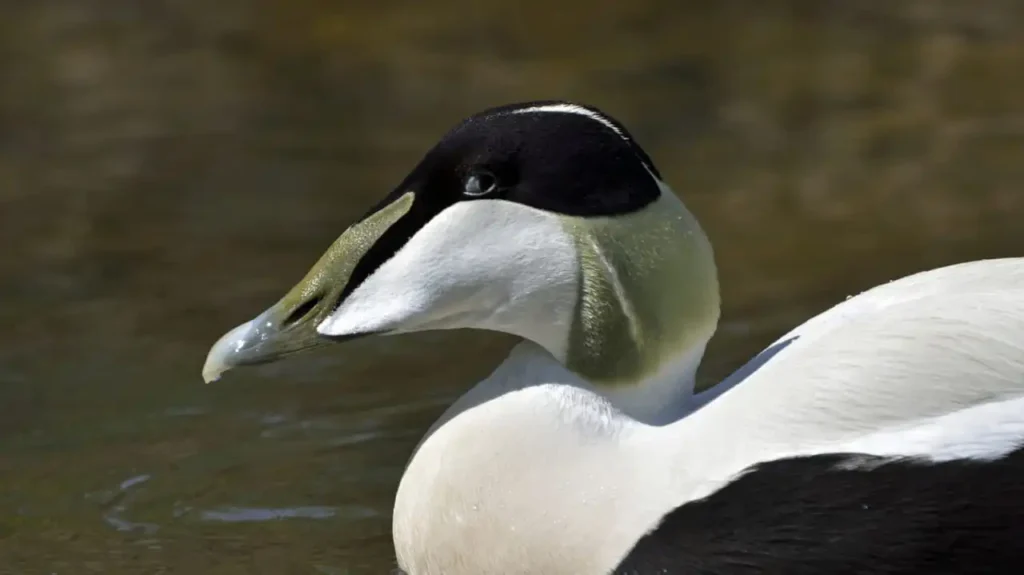
The common eider is a large sea duck found primarily in the northern coastal regions of the Arctic and sub-Arctic. Known for its striking appearance and soft down feathers, the common eider is a bird of great interest to both birdwatchers and conservationists.
Males are particularly notable for their striking plumage, which features a distinctive black-and-white pattern with a green nape. Females, in contrast, are mottled brown, providing excellent camouflage while nesting. Common eiders are highly social birds, often seen in large flocks, especially during migration.
These ducks are well adapted to marine life. They are excellent divers, capable of reaching depths of up to 60 meters (200 feet) to forage for food, such as molluscs, crustaceans, and sea urchins. Their diet is rich in protein, which is crucial for their reproductive success.
During the breeding season, female eiders build nests on the ground near the coast, often using down feathers from their bodies to line the nests with insulation. Down is highly valued for its warmth and lightweight, making it a sought-after material in the production of high-quality down products.
However, the common eider faces threats from climate change, habitat loss, and overharvesting. Conservation efforts are underway to protect their breeding grounds and maintain healthy populations.
Common Eider Facts
| Habitat | Coastal areas, islands, and Arctic waters |
| Lifespan | 10-15 years |
| Size | 20-26 inches in length |
| Weight | 2-6.5 pounds |
| Diet | Mollusks, crustaceans, sea urchins |
| Adaptations | Strong diving ability, thick insulating down |
| Threats | Climate change, habitat loss, hunting |
The common eider is a remarkable bird that not only enhances the beauty of the Arctic landscape but also plays a vital role in its ecosystem. Protecting these ducks and their habitats is essential to ensuring their survival for future generations.
9. The Enigmatic Narwhal: The Unicorn of the Sea

The narwhal, often called the “unicorn of the sea,” is famous for its long curly tusk, which is actually an elongated tooth. These unique marine mammals are highly adapted to life in the deep, icy waters of the Arctic. Narwhals primarily feed on fish and squid, using their tusk to sense changes in their environment. They are social animals, often found in pods, swimming together in the frigid waters. Despite their beauty and mystique, narwhals face increasing dangers from climate change and human activity, including oil exploration and shipping traffic.
- Best Places to See: Baffin Island (Canada), Greenland, Arctic waters
- Conservation Status: Near Threatened
Narwhal Facts
| Habitat | Arctic waters, deep ocean |
| Lifespan | 30-50 years |
| Size | Up to 18 feet in length (excluding tusk) |
| Weight | 1,800-3,500 pounds |
| Diet | Fish, squid, shrimp |
| Adaptations | Deep diving ability, thick blubber |
| Threats | Climate change, hunting, oil exploration |
10. The Beluga Whale: The Playful “Canary of the Sea”

The beluga whale is one of the most recognizable and beloved marine mammals in the Arctic. With its striking white colour and friendly nature, the beluga is known as the “canary of the sea” due to its high-pitched vocalizations. These social creatures often travel in pods and communicate using a variety of sounds. Beluga whales are well adapted to the icy waters of the Arctic, with thick layers of blubber for insulation and the ability to navigate through ice-laden waters. Their numbers are declining due to threats from pollution, climate change, and commercial hunting.
- Best Places to See: Churchill (Canada), Svalbard (Norway), Russia
- Conservation Status: Near Threatened
Beluga Whale Facts
| Habitat | Arctic and sub-Arctic waters |
| Lifespan | 35-50 years |
| Size | 13-20 feet in length |
| Weight | 2,000-3,500 pounds |
| Diet | Fish, crustaceans, worms |
| Adaptations | Echolocation, thick blubber |
| Threats | Pollution, climate change, hunting |
11. The Walrus: The Colossal Icon of the Arctic
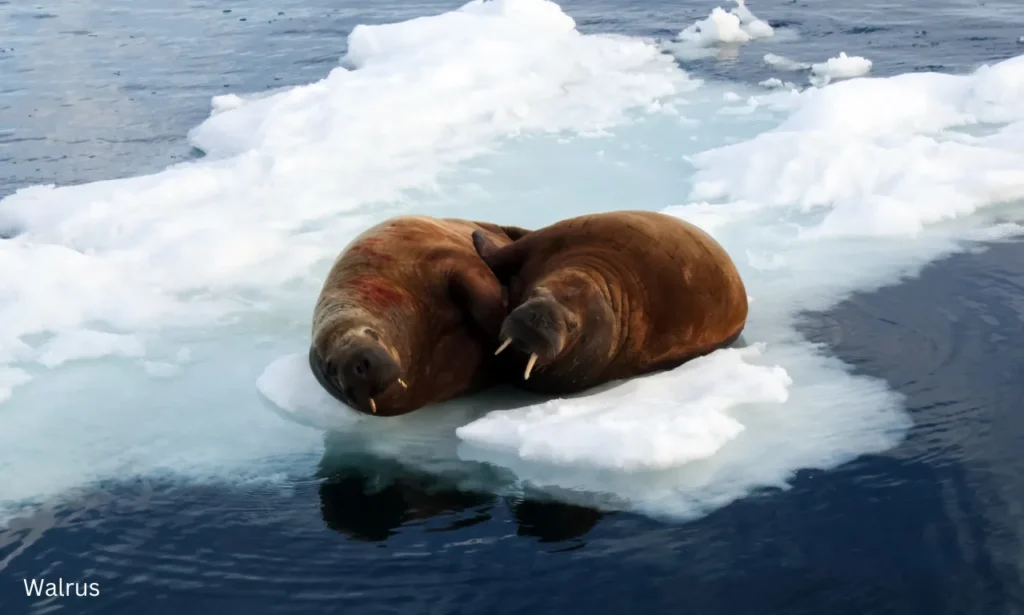
The walrus is one of the most iconic marine mammals in the Arctic, known for its large size and distinctive tusks. These tusks are used for various purposes, such as helping the walrus haul itself out of the water and onto ice, defending itself from predators, and even breaking through ice. Walruses are highly social animals, often gathering in large colonies on ice floes or beaches. Their thick layers of blubber help them survive in frigid waters, while their whiskers help them locate shellfish on the ocean floor. Despite their formidable size, walruses are under threat due to shrinking ice habitats and human activities like hunting.
- Best Places to See: Svalbard (Norway), Alaska, Russia
- Conservation Status: Vulnerable
Walrus Facts
| Habitat | Coastal areas, sea ice, shallow waters |
| Lifespan | 20-30 years |
| Size | 7.5-11.5 feet in length |
| Weight | 1,800-3,700 pounds |
| Diet | Thick blubber, tusks for ice and defence |
| Adaptations | Thick blubber, tusks for ice and defense |
| Threats | Climate change, hunting, habitat loss |
12. The Ringed Seal: Vital Survivor of the Arctic Ice
The ringed seal is the smallest and most widespread seal species in the Arctic. It is critical in the Arctic food chain, serving as a primary food source for polar bears and other predators. With its thick blubber and compact body, the ringed seal is well adapted to the frigid Arctic waters. It spends much of its time on ice floes, using its sharp claws to create breathing holes in the ice. Ringed seals are excellent swimmers and divers, capable of staying underwater for long periods while hunting fish and crustaceans. However, the rapid loss of sea ice due to climate change puts their future at risk.
- Best Places to See: Alaska, Greenland, Northern Canada
- Conservation Status: Least Concern
Ringed Seal Facts
| Habitat | Sea ice, coastal waters, Arctic Ocean |
| Lifespan | 25-30 years |
| Size | 3.5-5 feet in length |
| Weight | 110-150 pounds |
| Diet | Fish, crustaceans, invertebrates |
| Adaptations | Thick blubber, sharp claws for ice |
| Threats | Climate change, habitat loss, predation |
13. Musk Ox: The Resilient Beast of the Arctic
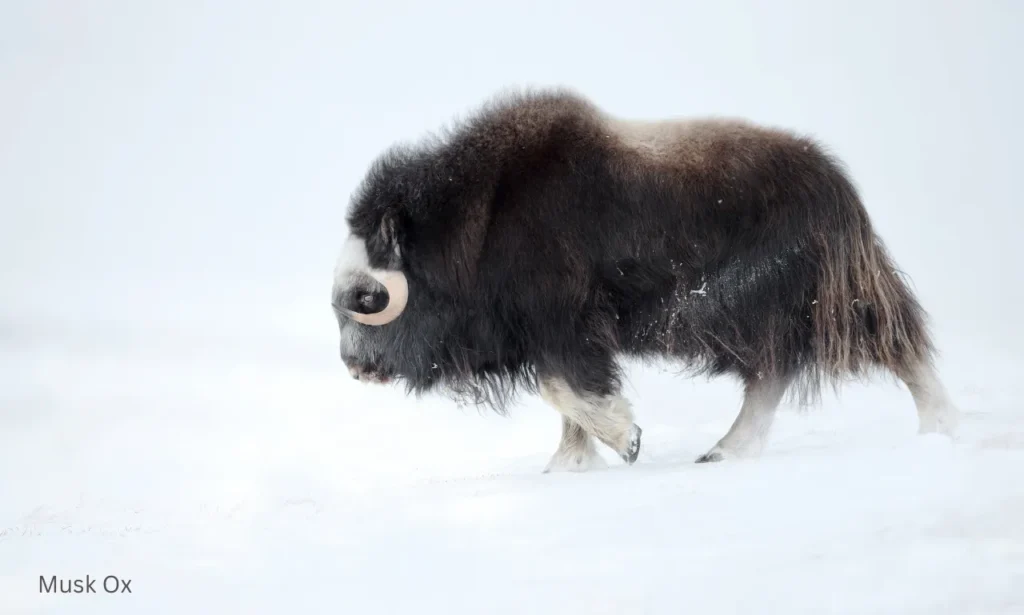
The musk ox is an impressive and robust creature that roams the Arctic tundra. Known for its thick, shaggy coat, which can range in colour from dark brown to light tan, this animal is built to withstand some of the harshest climates on Earth. Musk oxen have long, curved horns that can reach lengths of up to 30 inches, which they use for defence against predators and during battles with other males for dominance during mating season.
These social animals typically live in herds of 10 to 20 individuals, allowing them to protect one another from predators like wolves and bears. When threatened, musk oxen have a unique defence mechanism; they form a tight circle, with young and vulnerable individuals in the centre. This behaviour provides a formidable barrier against attackers and showcases their cooperative nature.
Musk oxen are primarily herbivores, feeding on grasses, mosses, and lichens during the short Arctic summer. They are well adapted to their environment, with a thick layer of fat beneath their skin that provides insulation against freezing temperatures. In fact, their dense undercoat, known as qiviut, is one of the warmest fibres in the world and is highly valued for its softness and insulating properties.
Despite their hardy nature, musk oxen face threats from climate change, which is impacting their habitats and food sources. Additionally, hunting and habitat loss pose risks to their populations. Conservation efforts are essential to ensure the survival of this magnificent species in the wild.
Musk Ox Facts
| Habitat | Arctic tundra, coastal areas |
| Lifespan | 12-20 years |
| Size | 4-5.5 feet in length |
| Weight | 400-900 pounds |
| Diet | Grasses, mosses, lichens |
| Adaptations | Thick fur, fat layer for insulation |
| Threats | Climate change, habitat loss, hunting |
Musk oxen are not just a remarkable sight on the tundra; they embody the resilience of life in extreme conditions. Protecting their habitats and ensuring their survival is crucial for maintaining the balance of Arctic ecosystems.
Certainly! Here’s the complete list of the 25 beautiful animals that have been discussed in detail today:
Conclusion
The Arctic is one of the planet’s last true wildernesses, a land of ice, snow, and incredible wildlife. Each animal that calls this frozen region home has evolved extraordinary adaptations to survive and thrive in a harsh environment. From the polar bear’s hunting prowess on sea ice to the Arctic tern’s record-breaking migration, these creatures are a testament to nature’s ability to flourish in even the most extreme conditions. However, climate change and human activities now threaten their way of life, making conservation efforts more crucial than ever. By learning more about Arctic animals and supporting conservation initiatives, we can help protect these remarkable species for future generations.
FAQs About Arctic Animals
1. What is the most common animal in the Arctic?
The most common large animal in the Arctic is the polar bear, especially in areas with plenty of sea ice where they hunt seals. However, smaller animals like the Arctic fox and lemmings are also widespread.
2. How do Arctic animals survive the cold?
Arctic animals survive freezing temperatures with adaptations like thick fur and layers of blubber and behavioural strategies such as huddling together or migrating to warmer areas during the winter.
3. Are there any herbivores in the Arctic?
Yes, animals like the reindeer and Arctic hare are herbivores. They survive by eating lichen, moss, and other sparse vegetation found in the tundra.
4. What animals live in the Arctic year-round?
Many animals are permanent Arctic residents, including the polar bear, Arctic fox, musk ox, and ringed seal. These species have evolved to handle the extreme cold and scarce food supplies during the winter months.
5. How is climate change affecting Arctic animals?
Climate change is causing the Arctic to warm faster than any other region, melting sea ice and changing ecosystems. This threatens animals like polar bears and ringed seals, which depend on sea ice for hunting, and alters the migratory patterns of species like reindeer.
6. What are some endangered Arctic animals?
Species such as the polar bear, narwhal, and walrus are considered vulnerable due to the rapid loss of sea ice and increasing human activities like oil exploration and shipping in the Arctic.
7. Can tourists see Arctic animals in the wild?
Yes, there are several destinations, such as Svalbard, Greenland, and Churchill, Canada, where guided tours and wildlife expeditions offer the opportunity to see Arctic animals like polar bears, Arctic foxes, and beluga whales in their natural habitats.
8. Do Arctic animals hibernate?
Not all Arctic animals hibernate, but some do. For example, the Arctic ground squirrel enters a state of deep hibernation during the winter months. Other animals, such as polar bears, remain active year-round but may enter a state of dormancy or reduced activity.

